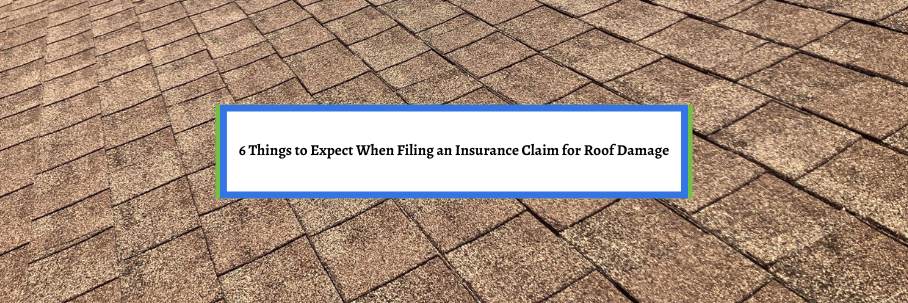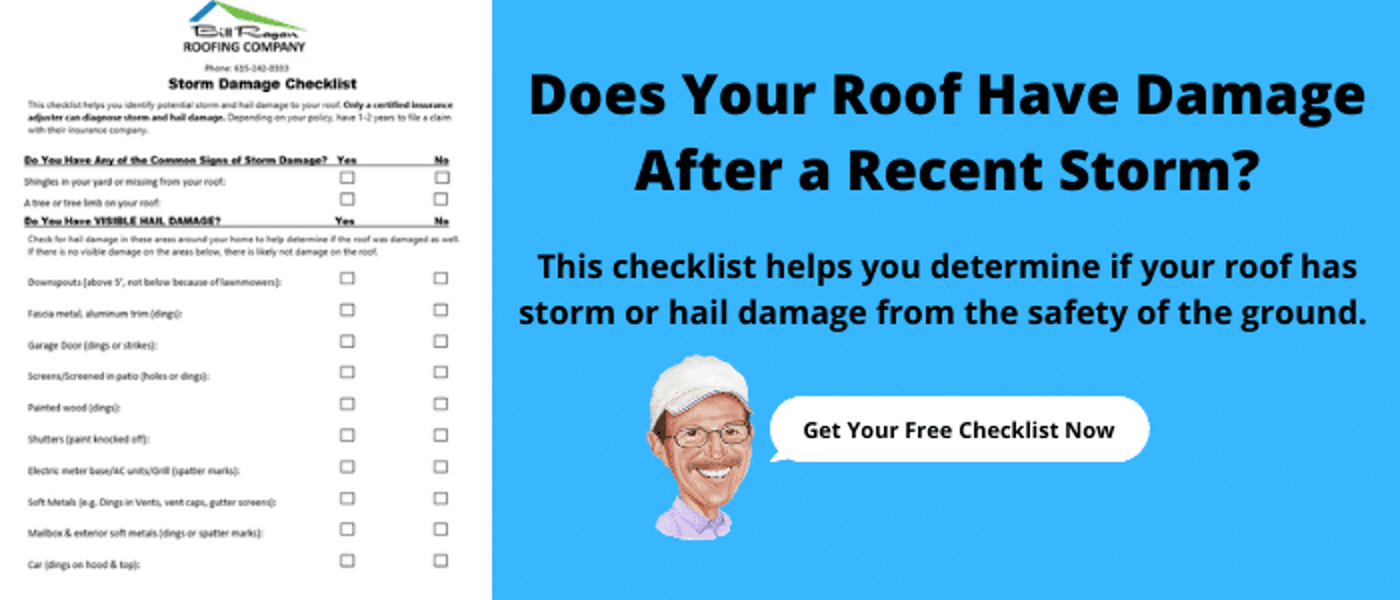6 Things to Expect When Filing an Insurance Claim for Roof Damage

Are you about to file a claim for roof damage after a recent storm? Do you know what to expect when going through the process?
Unfortunately, roofing claims have skyrocketed over the last five years due to increased strong storm systems. Obviously, the hope is that you’ll never have to use your policy.
But when you do, it starts a confusing and stressful process with your insurance company. It’s even more stressful when you’ve never been through it before.
The last thing you want is to go into it unprepared or taken by surprise.
For over 30 years, Bill Ragan Roofing has educated homeowners about the ins and outs of filing an insurance claim for roof damage. Now, I want to help you understand what to expect before starting the process.
Let’s get to the 6 things to expect when filing an insurance claim for roof damage.
1. Be ready for door knockers
Anytime an area gets hit with a strong storm, door knockers inevitably come into neighborhoods going door to door. This isn’t necessarily a bad thing, but the problem is most of them are from out-of-state roofing companies who chase storms.
They undercut local roofing company prices, take your money, and go on to the next storm. I guarantee they’re not worried about adhering to local codes and properly installing your roof.
After all, they most likely won’t be around if there’s a problem in the future. Door knocking is becoming more common in the roofing industry with the increase in severe storms, so it’s important to go with a local company.
That’s why you need to ask anyone knocking on your door if they have a physical office in your area, a phone number with a local area code, and if they're licensed, bonded, and insured in your state.
2. Insurance work brings out bad roofers
One of the most important things to understand about the insurance process is that it tends to bring out the worst in the roofing industry. Some companies scam homeowners when they're desperate to get their roof problem taken care of as quickly as possible.
They’ll offer prices that are way too good to be true, hoping people jump at them without considering why it’s so low. Unfortunately, they leave behind shoddy work, low-quality materials, and plenty of headaches.
This isn’t to say all roofers look to take advantage of homeowners when a storm hits. However, it’s still too common enough that I want you to be aware of it from the beginning.
3. The insurance adjuster is the only one who can approve your roof damage claim
Once you start the claim process, both the insurance company and the roofer will perform an inspection. Even if you get an inspection from a roofer first, only the insurance adjuster can approve your claim.
A roofing contractor can inspect for storm damage and advocate for you if they think you have it. But even if a roofing contractor is 100% certain that you need your roof replaced because of storm damage, the insurance adjuster has all the power.
Everyone makes mistakes, even insurance adjusters, so there’s a chance your claim will be denied (more on this in a bit). However, there are ways to double and triple-check your roof if you're adamant it has storm damage.
4. Your insurance policy determines what the insurance company pays
There are two types of insurance policies: Actual Cash Value and Replacement Cost Value. Both give you a payout, but the amount they provide is very different.
So, it’s crucial to review your policy to learn if they’ll actually pay for a new roof if it’s damaged.
Actual Cash Value policy
An Actual Cash Value (ACV) policy only provides a check for the depreciated value of your roof. This will be a one-time payment for what your roof is valued at the time of the claim.
This policy will not cover the full cost of a new roof, which means you’ll make up the rest out-of-pocket. There are roofers willing to do the job for the amount an ACV policy gives you, but this guarantees using cheap materials and labor.
Replacement Cost Value policy
A Replacement Cost Value (RCV) policy gives you what it costs to replace your roof with a brand-new version of itself. After everything is approved, you’ll first get a check for the actual cost value of your roof while the recoverable depreciation is held back.
After replacing the roof and proving it was done per the claim, you’ll get a second check covering most or the rest of the cost. However, you’ll have to pay the difference for upgrades, like going from 3-tab asphalt shingles to architectural asphalt shingles.
Unfortunately, RCV policies are becoming a thing of the past when homeowners go to renew their insurance policies. This is simply due to the sheer volume of claims in recent years and (as they claim) homeowners “neglect” their roofs.
5. You’ll most likely have to supplement your claim
Even with an RCV policy, most initial insurance estimates won’t cover the full cost of a new roof. While you can take the payout as is, you’ll have to supplement your insurance claim to get most or all of a new roof’s cost covered.
It requires putting in the work to get every line item (including local codes), labor, dump fees, overhead, profit, and everything in between included. A roofing contractor with insurance experience helps you do this, but every company does it differently.
I provide a checklist with every line item that an insurance estimate should include. This gives our customers the power to go through a claim, add what’s missing, and send it back to their insurance company for approval.
Getting pushback on supplementing is common, especially around things like overhead. But if you have an RCV policy, the insurance company should pay for what a roofer needs to do the job correctly while also being profitable.
6. There’s a chance your roof damage insurance claim will be denied
One of the biggest things to keep in mind when filing an insurance claim is that there’s a chance that it could be denied. Most claims are denied because the roof wasn’t installed properly, the attic isn’t adequately ventilated, waiting too long to file, or because of policy exclusions.
Remember, the insurance adjuster has all the power to deny a claim. But if they deny your claim because they didn’t find roof damage, you can double and even triple-check.
The first is to get a second opinion by asking your insurance company for a different adjuster. They’ll either approve your claim or agree with the first adjuster that there’s no viable claim.
If you still want to pursue a claim after the second no, you can contact a structural engineer. They’ll inspect the roof and offer proof to the insurance company that the roof structure needs to be replaced.
If this fails, you’ll move on to a private adjuster and legal avenues that I’m not qualified to speak on outside of our service. However, this should be an absolute last resort and gets costly with attorney and legal fees.
How do you avoid potential scams when your roof has storm damage?
After reading this article, you now know the 6 things to expect when filing an insurance claim for roof damage. Honestly, the process can be long, confusing, and frustrating.
Understanding what to expect simply helps you get ahead of it. However, you’re probably now wondering how the actual process works.
The exact claim process varies by insurance company, but the main steps are pretty uniform across the industry. That’s why I wrote another article breaking down the insurance claim process for roof damage.
Check out What’s the Insurance Process to Replace a Storm-Damaged Roof to learn what happens when filing a claim for roof damage.


